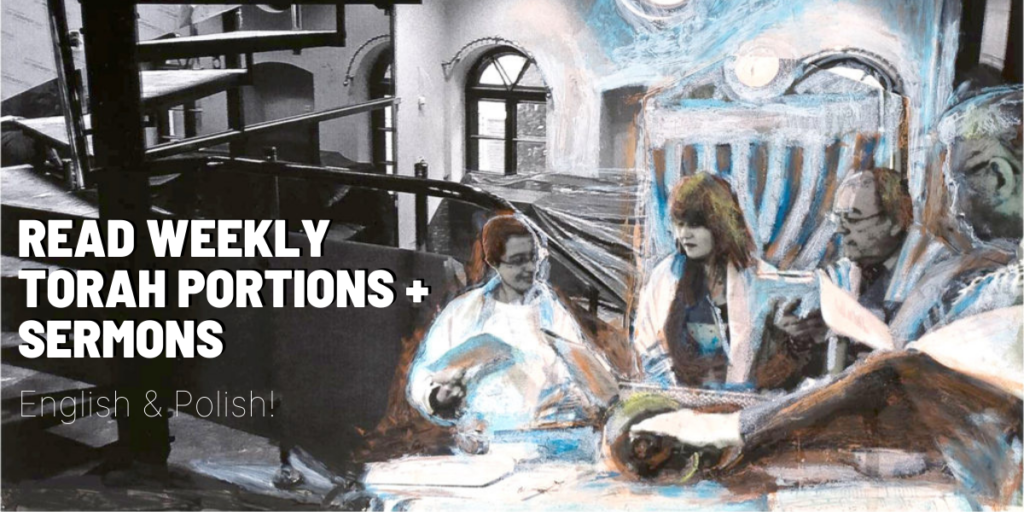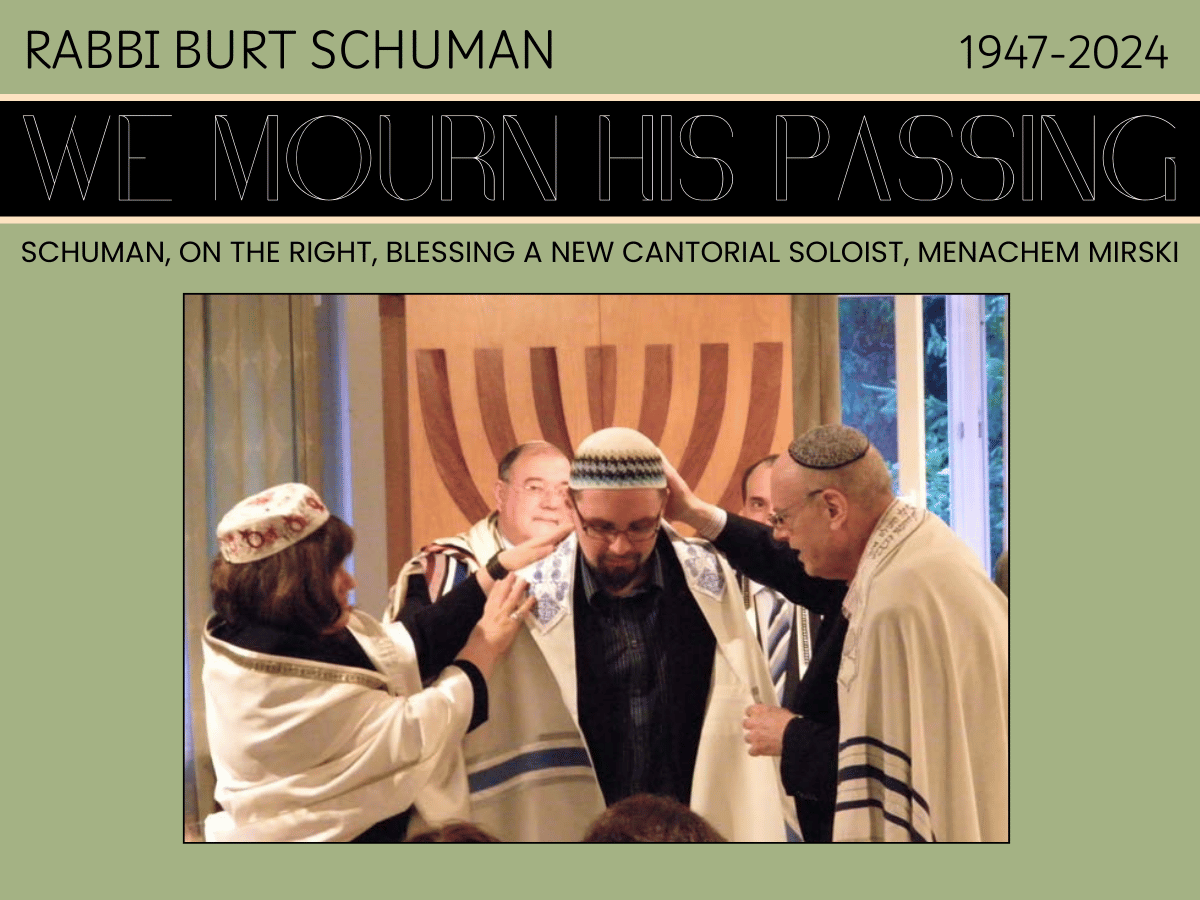September 4th, 2015/Elul 20, 5775
For those of you who have attended a Shabbat morning service, the ceremony for taking out and returning the Torah can often feel very theatrical. We rise, we bow, we face the ark, we turn and march around the synagogue, with many kissing the Torah as it passes. Only when the Torah has finally come to a rest on the table and is opened up for the reading, do we sit down. This highly choreographed dance is a reenactment of the revelation of the Torah on Mt. Sinai, and we are meant in some way to experience a sense of awe as the Torah is taken out of its resting place in the ark and read. And after the Torah is chanted, the revelation itself, the hagbah, the raising of the Torah takes place. The Torah is lifted high and we raise up our hand as we bear witness to the words of the Torah scroll. Then finally, the Torah is carefully covered and put away. If someone walked into a service unfamiliar with the role of the Torah in Jewish tradition, they would walk out clearly knowing its importance.
We read in this week’s Torah portion: “cursed be the person who does not hold up the words of the Torah” (Deut. 27:26). Rashi writes about this statement on a symbolic level, saying that every Jew should agree to follow and “hold up” the entirety of the Torah, all of the laws and commandments, or otherwise they will be cursed. This is clearly a harsh statement and especially problematic, since we know that no one, not even the greatest Torah scholar has the ability to follow all the laws in their lives. Thankfully, many other commentators took this more literally, seeing the statement instead as more of a practical reminder about the actual physical process of raising a Torah scroll.
The laws of raising the Torah are simple yet specific, and it is easy to see why breaking away from them could be seen as such a problem. According to halachah, when the Torah is lifted, the congregation must be able to see at least three columns of the Torah text. Ideally, the person who lifts the Torah should also raise it high enough and open it wide enough so that the individual letters of the text can be seen by the congregation. As the scroll is raised, the lifter should make sure to turn around, right and left, so that everyone can see the text. According to Kabbalah, there is a special light that emanates from the text during this holy moment.
The Shulchan Aruch, one of the most important guidebooks of Jewish law, reminds us that the honor of lifting the Torah should be reserved as the greatest honor in the community. While there are not many other requirements, the person who is lifting should be able to lift the Torah high without having to immediately sit down. On a purely practical side, at the beginning of the year, during the weeks after Simchat Torah, the person lifting should have a strong left arm and be able to balance a lopsided Torah. As we finish up the year, the right side becomes much more heavy. While going to the gym for a regular lower arm workout is not necessary to be a Torah lifter, it could make things easier.
The Jewish people are of course known as the “people of the book” and this very physical experience of seeing the scroll of the Torah in this way reminds us that all of Jewish life, all of the rituals, the traditions and the questions come from the same source. This is especially important in a diverse community where people differ on so much in their views and understanding of the Torah. In fact, the Talmud tells us that the primary reason for lifting the Torah and displaying it to the community is to show that this learning, this experience belongs to everyone, not just the person who has been honored with the role of hagbah. Whether or not we choose to see the words of the Torah as the literal words of God, or instead a powerful record of the experiences and traditions of the Jewish people, we know that the physical Torah, is a reminder of the spiritual Torah that has held our community together for so long.
Let’s take a moment to reflect back on the curse from this week’s portion for those who don’t “hold up” the Torah. The Jerusalem Talmud reminds us that it is not literally the person lifting the Torah who is cursed if they let it fall to the ground, but it is “the rabbis and judges” who have led the Jewish people who would be cursed. When the person lifting the Torah shows it to everyone assembled for the reading, he or she is saying to the community: “See this Torah? See these holy words? This is a reminder to all of us that we are responsible for each other. Those of us who are leaders of the community need to lead well and with compassion, and everyone else needs to constantly take care to not just listen to but live the words of the Torah in our lives. We have our differences, but we can’t forget what holds us together”.
In just a few weeks on Simchat Torah, we will complete the cycle of Torah reading and roll the scroll back to the beginning to start the story again. At this time, as we do whenever we complete a book of the Torah, we will turn to each other and sing the holy words, the important reminder of the one of the core teachings of Torah: “Hazak, hazak, venitchazek”. Be strong, and strengthen each other”.
As we head into the month of Elul and continue the preparation for the Yamim Noraim, the Days of Awe, let us continually be reminded to not just see the words of the Torah, but to try our best to live them in our lives, to teach and strengthen each other in our words and our actions. This is how we and our community will stay strong.
Rabbi Boris Dolin
4 września 2015/20 elul 5775
Dwar Tora do paraszy Ki Tawo
Każdy, kto uczestniczył kiedyś w porannym nabożeństwie szabatowym, wie, że ceremonia wyjmowania i odkładania Tory może często sprawiać wrażenie bardzo teatralnej. Wstajemy, kłaniamy się, zwracamy się ku Arce, odwracamy się i chodzimy po synagodze. Wiele osób całuje Torę, gdy ta znajdzie się obok nich. Siadamy dopiero wtedy, gdy Tora spocznie w końcu na bimie i zostanie otwarta na odpowiednim, przeznaczonym do odczytania miejscu. Ten niezwykle starannie wychoreografowany taniec stanowić ma odtworzenie sceny objawienia Tory na Górze Synaj. Gdy Tora zostanie wyjęta ze swojego miejsca spoczynku w Arce i zostanie odczytana, my powinniśmy doświadczyć zaś uczucia bojaźni i zachwytu. Po kantylacji fragmentu Tory, ucieleśniającej sam akt objawienia, ma miejsce hagbaha, czyli podniesienie Tory. Zwój zostaje uniesiony wysoko, a my podnosimy rękę, dając świadectwo słowom Tory. Na zakończenie Tora zostaje ostrożnie zakryta i odłożona na miejsce. Gdyby ktoś znalazł się nagle na nabożeństwie, nie znając wcześniej roli, jaką pełni w tradycji żydowskiej Tora, po jego zakończeniu nie miałby już z pewnością wątpliwości, jak ważną odgrywa ona rolę.
W przeznaczonej na ten tydzień paraszy czytamy: „Przeklęty, kto nie udźwignie [ang. hold up] słów Tory, aby je spełniał” (Pwt 27, 26)*. Wedle Rasziego słowa te rozumieć należy w wymiarze symbolicznym, jako stwierdzenie, że każdy Żyd powinien zgodzić się „udźwignąć cały ciężar Tory” i przestrzegać wszystkich zawartych w niej praw i przykazań, w przeciwnym wypadku spadnie na niego przekleństwo. Stwierdzenie to jest niewątpliwie surowe, a do tego niezwykle problematyczne, wiemy bowiem, że nikt, nawet największy uczony Tory, nie jest w stanie wypełniać wszystkich praw przez całe swoje życie. Na szczęście wielu innych komentatorów odczytało to zdanie bardziej dosłownie, interpretując je jako praktyczne przypomnienie o samej fizycznej czynności podnoszenia („dźwigania”) zwoju Tory.
Prawa dotyczące podnoszenia Tory są wprawdzie proste, lecz bardzo precyzyjne. Nietrudno zrozumieć, dlaczego wedle niektórych złamanie tych praw stanowić mogłoby duży problem. Wedle halachy, gdy Tora zostanie podniesiona, kongregacja musi być w stanie dojrzeć co najmniej trzy kolumny zapisanego w Torze tekstu. Najlepiej byłoby, gdyby osoba unosząca Torę podniosła ją na tyle wysoko i otworzyła zwój na tyle szeroko, aby kongregacja była w stanie dojrzeć pojedyncze litery tekstu. Gdy zwój zostanie uniesiony, podnosząca go osoba powinna odwrócić się w obie strony, na prawo i na lewo, tak, aby każdy mógł dojrzeć tekst. Wedle kabały podczas tego świętego momentu z tekstu emanuje szczególnego rodzaju światło.
Szulchan Aruch, jeden z najważniejszych przewodników po prawie żydowskim, przypomina nam, że bycie wyznaczonym do podnoszenia Tory uznawane powinno być za największy zaszczyt, jaki może spotkać członka kongregacji. Osoba wybrana do tego zadania nie musi spełniać wielu innych wymogów, powinna być jednak w stanie unieść wysoko Torę bez odczuwania natychmiastowej potrzeby, aby usiąść. Z czysto praktycznych względów, na początku roku, podczas tygodni po Simchat Tora, Torę powinna podnosić osoba posiadająca silne lewe ramię i będąca w stanie utrzymać w równowadze przechylony na jedną stronę zwój Tory. Z drugiej strony, gdy rok dobiega końca, to prawa strona zwoju staje się o wiele cięższa. Choć chodzenie na siłownię i wykonywanie regularnych ćwiczeń na wzmocnienie przedramienia nie jest konieczne, aby pełnić rolę osoby podnoszącej Torę, ułatwiłoby to niewątpliwie wykonywanie tego zadania.
Jak wiemy, lud żydowski nazywany jest „ludem księgi”, sam fizyczny akt ujrzenia zwoju Tory przypominać ma nam zaś, że całe życie żydowskie, wszystkie rytuały, tradycje oraz pytania wywodzą się z tego samego źródła. Jest to szczególnie ważne w kongregacji cechującej się różnorodnością, której członkowie tak bardzo różnią się w swoich poglądach i sposobach rozumienia Tory. W istocie Talmud mówi nam, że głównym powodem, dla którego unosimy Torę i pokazujemy ją społeczności, jest pragnienie zademonstrowania, że zawarte w niej kluczowe nauczanie i doświadczenie należy do wszystkich, nie tylko do osoby, która została uhonorowana wyznaczeniem do wykonania hagbahy. Niezależnie od tego, czy będziemy postrzegać słowa Tory jako dosłowne słowa Boga, czy też raczej jako posiadający fundamentalne znaczenie zapis doświadczeń i tradycji ludu żydowskiego, powinno być dla nas oczywiste, że fizyczna, namacalna Tora przypominać ma nam o Torze duchowej – tej, która pozwoliła zachować jedność naszego ludu przez tak długi czas.
Zastanówmy się przez chwilę nad przekleństwem, które wedle przeznaczonej na ten tydzień paraszy spadnie na tych, którzy nie „udźwigną” [ciężaru] Tory. Talmud Jerozolimski przypomina nam, że słów tych nie należy rozumieć dosłownie – jako sugerujących, iż osoba odpowiedzialna za podnoszenie Tory zostanie przeklęta, jeśli pozwoli jej upaść na ziemię. Przekleństwo dotknąć mogło natomiast „rabinów i sędziów”, którzy stali na czele ludu żydowskiego. Gdy osoba podnosząca Torę pokazuje ją wszystkim, którzy przybyli na czytanie, zdaje się mówić społeczności: „Widzicie tę Torę? Widzicie te święte słowa? Przypominać ma to nam wszystkim, że jesteśmy za siebie nawzajem odpowiedzialni. Ci z nas, którzy pełnią rolę przywódców społeczności, muszą przewodzić jej we właściwy, pełen życzliwości i wrażliwości sposób, pozostali muszą zaś nieustannie dbać o to, aby nie tylko słuchać, lecz również urzeczywistniać słowa Tory w swoim własnym życiu. Możemy różnić się co do pewnych kwestii, nie możemy jednak zapominać o tym, co sprawia, że razem tworzymy wspólnotę”.
Już za kilka tygodni będziemy obchodzić Simchat Tora, zakończymy cykl czytania Tory i „przewiniemy” zwój z powrotem na początek, aby opowieść mogła rozpocząć się na nowo. Wówczas, tak jak czynimy to za każdym razem, gdy kończymy czytanie dowolnej księgi Tory, zwrócimy się ku sobie nawzajem i odśpiewamy święte słowa, przypominające o jednej z kluczowych nauk zawartych w Torze: „Chazak, chazak, wenitchazek” – „Bądźmy silni i umacniajmy się nawzajem”.
Wraz z upływem kolejnych dni miesiąca elul, gdy będziemy kontynuować nasze przygotowania do Jamim Noraim, do Strasznych Dni, nie zapominajmy nigdy, iż nie powinniśmy ograniczać się do spoglądania na słowa Tory, lecz że powinniśmy próbować z całych sił urzeczywistniać je w naszym życiu, tak, abyśmy uczyli się i wzmacniali nawzajem poprzez nasze słowa i czyny. Dzięki temu zarówno my sami jak i nasza społeczność będziemy wzrastać w siłę.



















Leave a Reply